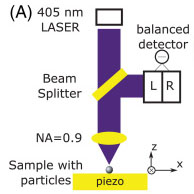Spotlight on Optics: "Convolutional neural network applied for nanoparticle classification using coherent scatterometry data"
This highlighted article from OSA journals addresses the important problem of "killer" particle detection and classification on wafers in semiconductor manufacturing. This is a challenging problem because the particles are generally sub-micrometer in size, and detection must be performed at high speed. The authors use a convolutional neural network to classify the particles to five classes: 80 nm, 60 nm, 50 nm, 40 nm and background.
Training and testing indicate that the network performs well; but the authors did not stop there. In the most elegant piece of the work, they developed a probabilistic framework to characterize how their network deals with novelty, i.e. atypical inputs that had not been part of the training set. The essence of the idea, borrowed from the OpenMax method developed for computer vision, is to assign a novelty score, based on a Boltzmann-like distribution, and establish a threshold so that above it the network flags the input as "unknown" and refuses to classify it. The paper is also written in a visually instructive way, e.g. Figure 3(C) showing the learning trajectory on the energy surface as a function of the first two principal components of the images should make its way in any machine learning class!

Read the article here:
Convolutional neural network applied for nanoparticle classification using coherent scatterometry data
D. Kolenov, D. Davidse, J. Le Cam, and S. F. Pereira
Applied Optics Vol. 59, Issue 27, pp. 8426-8433 (2020)
https://doi.org/10.1364/AO.399894